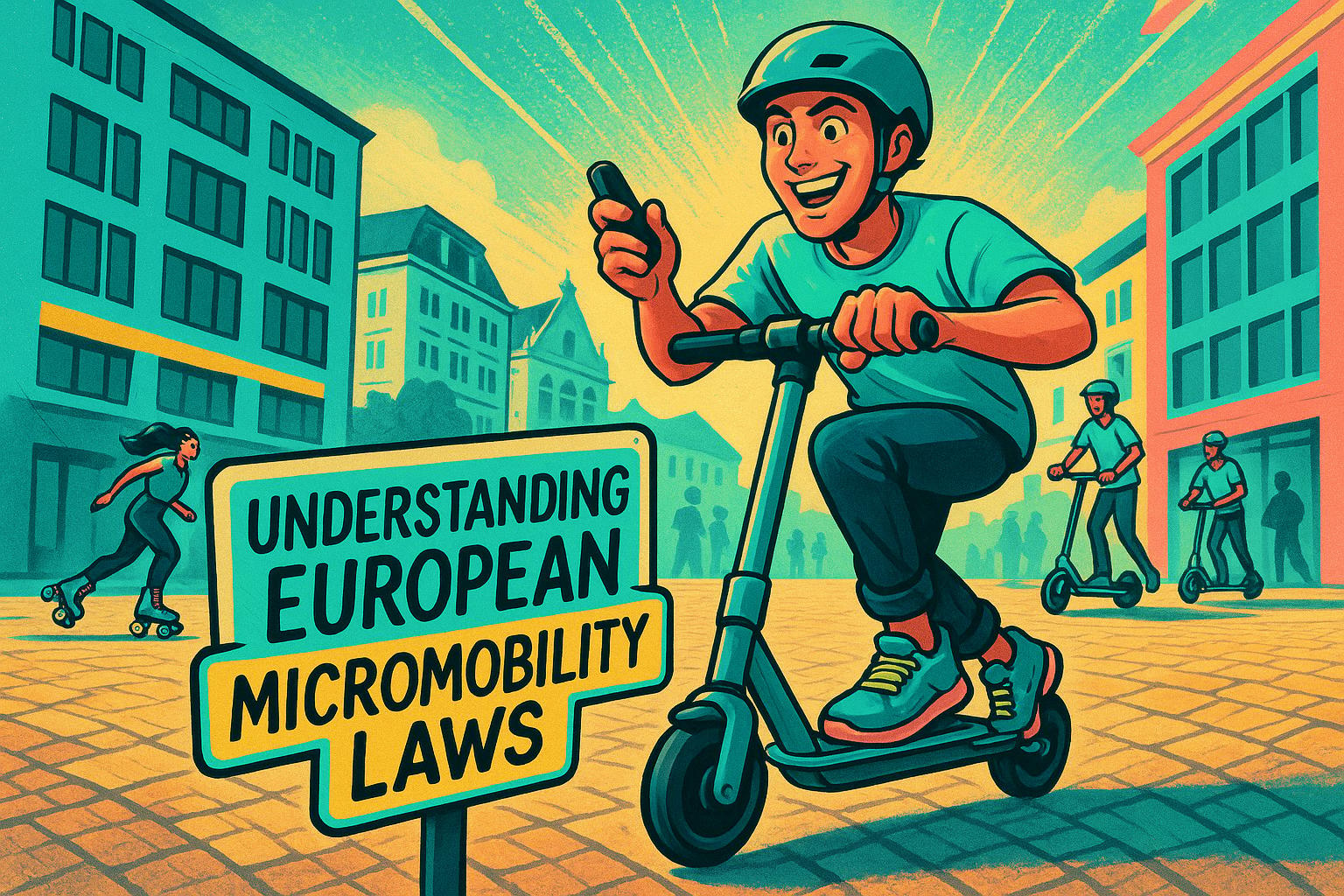Micromobility, like electric scooters, bikes, and roller skates, is quietly cutting urban carbon emissions by replacing short car trips. Over half of U.S. car trips are under three miles, making these devices ideal for reducing pollution. Electric roller skates, for example, produce almost no direct emissions, require less energy to manufacture, and feature regenerative braking to save energy. Cities adopting micromobility can significantly shrink their carbon footprint, with shared services already offsetting millions of pounds of CO₂ annually. These small changes in commuting habits can lead to cleaner air and more efficient urban travel.
Chart 1: Micromobility's Impact on Urban Carbon Emissions
U.S. Urban Transportation Emissions by Mode
Transportation is a major contributor to greenhouse gas emissions in American cities, responsible for one-third of all urban emissions. Unlike traditional vehicles, electric roller skates like Wheelfeet produce almost no direct emissions when in use. They rely on rechargeable batteries, which can be powered by an increasingly cleaner electricity grid.
Here's a striking statistic: over half of all car trips in the U.S. cover less than three miles. With a 9-mile range, electric roller skates are perfectly suited for these short distances. Research suggests that micromobility could replace up to 18% of these short car trips (0–3 miles) in cities like Seattle. This highlights the potential for micromobility to make a real dent in urban emissions.
Colin Murphy, Director of Research and Consulting at the Shared-Use Mobility Center, sums it up well:
"To the degree that it is replacing trips that would otherwise be taken with a car, micromobility has a big climate impact".
Carbon Reduction from Short Trip Replacement
Replacing short car trips with micromobility can yield measurable carbon savings. Take Oswego, New York, for example. Bird Rides estimated that introducing e-scooters there could cut 112,500 pounds - 56 tons - of carbon dioxide emissions annually by replacing car trips. Similarly, in South Lake Tahoe, Lime e-scooters logged over 200,000 rides in 2020, which translated to 186,000 fewer vehicle miles traveled.
Electric roller skates add another layer of efficiency to these efforts. With speeds of up to 15 mph and a range of 9 miles, they’re ideal for short urban trips. Plus, their regenerative braking system captures energy during stops, improving overall efficiency.
The impact of shared micromobility is already evident. In 2022, shared micromobility services helped offset around 74 million pounds of carbon dioxide emissions by replacing car trips across North America.
This data underscores a key point: micromobility isn’t just about convenience - it’s a powerful way to shrink urban carbon footprints by targeting the most frequent car trips. These findings pave the way for deeper exploration in the upcoming charts.
Chart 2: Full Life-Cycle Carbon Footprint of Electric Roller Skates
Life-Cycle Emissions: Electric Roller Skates vs. Gas Vehicles
When you evaluate the entire lifecycle - covering everything from production (including the impact of batteries) to disposal - electric roller skates come out ahead, thanks to their compact size and lightweight design. These features mean they produce significantly fewer emissions during operation compared to traditional vehicles.
To put it in perspective, manufacturing a standard gas-powered sedan generates around 6 metric tons of CO₂, while a full-sized electric car exceeds 10 metric tons. Electric roller skates, with much smaller batteries and simpler builds, require far fewer resources and emit considerably less during production.
The operational advantages are just as striking. Gas-powered vehicles emit roughly 400 grams of CO₂ per mile from tailpipe emissions alone. In contrast, electric roller skates generate zero direct emissions since they run entirely on electricity. Over their entire lifecycle, the minimal emissions from operating electric roller skates more than compensate for their relatively small manufacturing footprint.
These lifecycle benefits become even more compelling when you consider U.S.-specific factors that amplify the environmental advantages of electric roller skates.
U.S.-Specific Life-Cycle Factors
In the United States, commuting habits and energy sources add another layer of eco-friendliness to electric roller skates. Urban commutes are often short, making their typical 9-mile range ideal for daily trips. Additionally, the carbon footprint of charging depends heavily on the energy mix in different regions. Areas with greater reliance on renewable energy sources make electric transportation even cleaner.
While full-sized electric cars may consume up to 50% more water than gas-powered vehicles during battery production, the smaller batteries used in electric roller skates require far less water and fewer raw materials. Charging these skates is also straightforward - they can plug into standard household outlets, often during off-peak hours when cleaner energy is more readily available. Features like regenerative braking, which recaptures energy during stops, further extend their efficiency and spread out manufacturing emissions over years of use.
These factors make electric roller skates a practical and environmentally friendly option for short-distance travel.
Unleashing the potential of micromobility for the last mile - Perspectives from Australia
Chart 3: Per-Trip Carbon Savings - Electric Roller Skates vs. Cars
This section dives into the numbers, comparing carbon emissions per trip between cars and electric roller skates.
CO₂ Emissions Per Mile by Transportation Mode
When it comes to CO₂ emissions, gas-powered vehicles are heavy hitters. They release far more CO₂ per mile compared to electric alternatives. On the other hand, electric roller skates operate entirely on battery power, meaning they produce zero direct emissions. Even when factoring in the emissions from charging, their overall carbon footprint remains incredibly low. Since most urban trips are short, swapping a car for electric roller skates can lead to a noticeable drop in emissions.
Daily Commute Examples and Carbon Savings
Picture a commuter making a short daily round trip between home and work. Using a car for this journey generates a considerable amount of CO₂. Now, imagine replacing that car with Wheelfeet electric roller skates. With a 9-mile range, regenerative braking, and speeds of up to 15 mph, these skates eliminate those emissions entirely. Over a typical work year, the reduction in CO₂ emissions adds up quickly.
Beyond the environmental perks, electric roller skates can also cut travel time in crowded urban settings, offering a quicker, door-to-door option. These scenarios show how integrating electric roller skates into daily routines can significantly shrink both individual and citywide carbon footprints.
sbb-itb-bf837b9
Chart 4: How Regenerative Braking and Design Reduce Emissions
The innovation behind electric roller skates isn’t just about swapping out gas-powered trips. Two standout features - regenerative braking and a lightweight build - work hand in hand to cut energy use and lower carbon emissions.
Carbon Reduction Through Regenerative Braking
Regenerative braking turns kinetic energy into electrical energy during deceleration. In Wheelfeet electric roller skates, the motors shift gears when the rider slows down, acting as generators to capture energy that would otherwise vanish as heat. This reclaimed energy is then stored in the battery, reducing the need for frequent charging and shrinking the carbon footprint of each ride. This feature proves especially useful in cities, where stop-and-go movement is the norm. Combined with this energy recovery, the skates' lightweight design further trims energy demands.
Lightweight Design's Role in Lower Emissions
Weighing just 4.8 lbs (2.2 kg) - a whopping 70% lighter than electric scooters - Wheelfeet electric roller skates need far less energy for acceleration and steady movement. The reduced weight translates to lower energy consumption at every stage of use.
"Because it takes less energy to accelerate a lighter object than a heavier one, lightweight materials offer great potential for increasing vehicle efficiency." - U.S. Department of Energy
Supporting this, the National Academy of Sciences has shown that trimming an object’s weight by 10% can boost fuel efficiency by 5.1%. This lighter design not only stretches battery life but also slashes energy use, making the skates more efficient overall.
"Lightweight designs are recognized as a key solution to improve fuel efficiency and cut emissions." - Journal of Cleaner Production
Together, regenerative braking and a lightweight structure create a powerful combination, delivering meaningful energy savings while reducing carbon emissions.
Chart 5: Citywide Carbon Savings with Mass Adoption
Expanding from individual trip savings, let's look at how widespread adoption of micromobility, like electric roller skates, can impact carbon emissions on a citywide scale. When urban commuters swap short car trips for electric roller skates, the cumulative carbon savings can be impressive.
Annual CO₂ Savings by U.S. City Size
Transportation accounts for a hefty 28% of greenhouse gas emissions in the U.S., making it a critical area for reducing the national carbon footprint. Even a modest shift toward micromobility can result in noticeable annual CO₂ reductions, with the impact varying based on the size of the city. This highlights how micromobility could reshape urban transportation, steering it toward a cleaner and more sustainable future.
Adoption Rate Assumptions and Scaling Potential
Replacing car travel with electric roller skates could lead to individual carbon savings of up to 2.2 tons annually. As more people adopt this mode of transport, the potential for citywide carbon reduction grows exponentially, reinforcing the importance of scaling micromobility solutions.
Conclusion: Moving Toward Cleaner Urban Transportation
Switching out short car trips for electric roller skates can make a big difference in reducing pollution. The data highlights how even small changes in daily habits can lead to meaningful improvements in urban air quality over time.
With features like regenerative braking and a lightweight build, these skates are designed to minimize the environmental impact of everyday travel while optimizing performance. Their ability to recover energy during braking and recharge the battery adds to their efficiency, making them a smart choice for sustainable commuting.
When individuals reduce their emissions, the collective impact can be enormous. As the charts above illustrate, even minor emission cuts per person can lead to noticeable improvements in air quality when applied on a citywide scale. Multiply these efforts, and the results become game-changing for urban environments.
Wheelfeet's electric roller skates combine clean energy technology with practical urban mobility, making them ideal for typical commutes. The regenerative braking system not only ensures smooth stops but also boosts the battery life, adding to their overall effectiveness.
Micromobility solutions like these are already available, offering an easy way to cut down on urban emissions. Replacing just a single short car trip with a cleaner alternative is a tangible step toward healthier city air.
Since transportation is a leading source of greenhouse gas emissions in the U.S., embracing micromobility is one of the simplest ways to shrink your carbon footprint. Plus, it’s a cost-effective and efficient way to get around. Why not start today?
FAQs
How do electric roller skates help lower carbon emissions in cities?
Electric roller skates are making a difference in cutting down urban carbon emissions by providing a greener alternative to traditional vehicles. While cars release 200–350 grams of CO₂ per mile, electric roller skates generate minimal emissions throughout their use. For comparison, electric scooters, another eco-friendly option, emit only 35–67 grams of CO₂ per mile.
By stepping in for gas-powered vehicles on shorter trips, electric roller skates help reduce the carbon footprint of urban travel and encourage more environmentally conscious commuting habits.
How does regenerative braking improve the efficiency of electric roller skates?
Regenerative braking boosts the efficiency of electric roller skates by reclaiming energy that’s typically wasted during braking. Instead of letting that energy dissipate as heat, the system converts it into electricity, which is then stored in the battery. Essentially, you're recharging the skates as you slow down.
This not only cuts down on energy use but also increases the skates' range and reduces strain on the braking system. It’s a smart, eco-conscious feature that improves performance while being kinder to the planet.
What steps can cities take to encourage the use of micromobility options like electric roller skates to reduce carbon emissions?
Cities can encourage more people to embrace micromobility by focusing on dedicated infrastructure. This means creating bike lanes, setting up safe parking spots, and ensuring these spaces are easy to access. On top of that, offering financial incentives - like subsidies or tax breaks - can make micromobility options more affordable and appealing.
Safety is another key factor. By establishing clear guidelines and operational policies, cities can build public confidence, making it easier for residents to trust and adopt these transportation methods. Adjusting pricing structures to lower costs and launching equity programs to expand access can further ensure that micromobility is a viable option for everyone.
These steps don’t just make getting around easier - they also support cleaner, greener cities by helping to lower urban carbon emissions.




Leave a comment
All comments are moderated before being published.
This site is protected by hCaptcha and the hCaptcha Privacy Policy and Terms of Service apply.